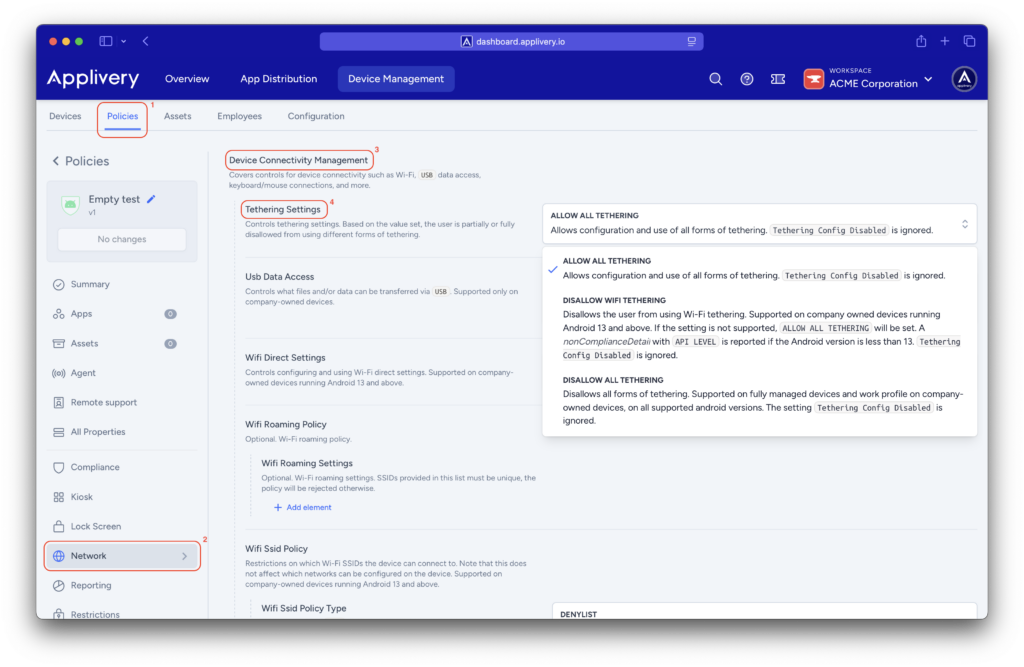Tethering on Android devices enables users to share their mobile data connection with other devices via Wi-Fi, USB, or Bluetooth. In a managed environment, controlling this feature is crucial to ensure secure and efficient use of corporate resources.
Enrolling in tethering can be beneficial in certain scenarios, such as when employees are traveling or working in areas with limited Wi-Fi access. However, it also presents risks, including excessive data usage, unauthorized network access, and potential security vulnerabilities.
On the other hand, disabling tethering supports stricter data usage policies, helps prevent misuse of devices as mobile hotspots, and minimizes the risk of external threats.
Configuring a tethering policy #
Once in the Applivery Dashboard, navigate to Device Management > Policies (1).
Select the Android policy where you want to configure tethering. Then, from the left-hand menu, click on the Network (2) section. In the Device Connectivity Management (3) configuration, choose the option that best suits your needs under Tethering Settings (4):
- ALLOW ALL TETHERING: This option enables all forms of tethering (Wi-Fi, USB, and Bluetooth) on the device.
- DISALLOW WIFI TETHERING: This option blocks Wi-Fi tethering, while other types (e.g., USB, Bluetooth) may remain available.
- DISALLOW ALL TETHERING: This option fully disables tethering across all connection types. It is supported on fully managed devices, work profiles on company-owned devices, and all Android versions supported by Applivery.
In all three cases, any configuration related to Tethering Config Disabled will be ignored.
If the device runs a lower version, the system will fall back to <strong<ALLOW ALL TETHERING, and a nonComplianceDetail will be reported indicating the API LEVEL mismatch.

Managing Android tethering through Applivery allows organizations to strike an effective balance between user flexibility and administrative control. While enabling tethering can enhance user autonomy, particularly in scenarios like travel or limited connectivity, it also introduces potential risks related to data consumption and network security. Conversely, disabling tethering strengthens security posture and provides greater oversight of network usage, making it especially valuable in environments with strict compliance requirements.
With Applivery, these settings can be centrally managed and customized for specific device groups, ensuring consistent policy enforcement across your entire mobile fleet.